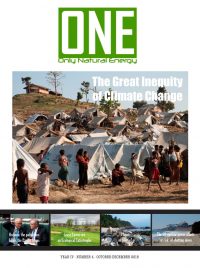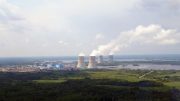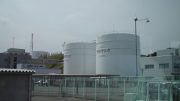Until now, nuclear energy has been a remote prospect for Estonian citizens. For over a century, the small Baltic country, with an average electricity demand of about 1,000 megawatts, has heavily relied on oil shale – a carbon-intensive fossil fuel – for its electricity production. Fortunately, more stringent environmental regulations and recent climate policies mean Estonia is now strictly obliged to phase out oil shale and execute a just transition for workers in mining regions.
However, the recent surge of panic over security of supply has opened the door to an increasingly blatant nuclear lobby, whose actions pay no heed to a recent analysis – conducted by the consultancy firm Trinomics in cooperation with the Tallinn branch of the Stockholm Environmental Institute (SEI) – which found that nuclear energy is the least favourable path Estonia could take towards climate neutrality.
More worryingly, Estonia’s Ministry of Economic Affairs and Communications, which commissioned the analysis, has turned a blind eye and seems determined to welcome nuclear investment that would nedlessly complicate its energy system. As a result, Estonia risks missing out on a golden opportunity to ensure a resilient, fully renewable and decentralised energy infrastructure.
No justification for nuclear in the Estonian context
As debates around green transition accelerate, recent studies demonstrate that Estonia has great potential to ramp up the pace by unlocking its massively underutilised wind and solar potential.
And according to the Trinomics/SEI analysis, the use of as-yet-unproven small modular reactors (SMRs) in driving the transition to a climate-neutral electricity system in Estonia is the least recommended of eight different scenarios.
The analysis highlights multiple limitations and threats related to nuclear pathways, including regulation issues, technological delays and citizen opposition to nuclear development. The preliminary evidence warns of:
(1) overreliance on a technology that is still underdeveloped with no history of use in Estonia;
(2) cost overruns (nuclear energy is far more expensive than sustainable alternatives like wind and solar for which Estonia has huge untapped potential);
(3) hold-ups with the deployment of SMRs (climate neutrality could be achieved faster on its current trajectory);
(4) safety risks; and
(5) the unresolved issue of permanent waste disposal.
As a non-renewable source, nuclear power also relies on imports of uranium and other rare materials, often from non-democratic countries, thus supporting exploitation and exacerbating existing inequalities.
Based on the assessment of Trinomics/SEI, a nuclear pathway is ‘not recommended’ and considered the ‘riskiest scenario’. The most recommended scenario is a combination of renewable energy sources (RES) and storage, followed by scenarios involving ‘all technologies’ (excluding nuclear) and ‘renewable gas’. We should also recall that Estonia recently set an ambitious target to cover its annual electricity consumption with 100 per cent renewable electricity from 2030 onwards, and that several reforms are currently being designed to accelerate procedures that would facilitate renewable energy. In this context, a non-nuclear pathway can only be viewed as the most logical, efficient and cost-effective way forward.
But should Estonia proceed with a costly, time-consuming and politically vulnerable SMR project, the ambition of its energy transition planning is likely to be negatively impacted and, in the worst case, severely delayed.
Ministry ignores its own report
In 2024, Estonia’s parliament will decide on whether to pursue a nuclear pathway once the findings of a dedicated working group are assessed. However, the Ministry for Economic Affairs and Communications appears to be already designing its energy policy with a bias towards nuclear energy.
Bafflingly, the ‘consultant assessment’ in the Trinomics/SEI analysis is accompanied by an ‘alternative ranking criteria’ that rates nuclear as the most preferred pathway (pages 10 and 28). The need for this alternative ranking is briefly justified on the grounds that selection of the pathway is ultimately a ‘political’ choice (page 9). Of course, this completely contradicts the very concept of an independent assessment and fails to explain why these alternative criteria were included.
The current draft of the Estonian Energy Sector Development Plan until 2035, which has so far only been shared with internal working groups, states that if fossil fuels are to be completely phased out from the energy system, the only alternative for meeting baseload demand is a nuclear power plant – a false assumption that contradicts a host of scientific studies on the potential of renewable energy sources.
Even more concerningly, the draft of the plan already provides for the establishment of a nuclear energy regulatory body, another alarming example of how preparations are being rushed ahead of informed decisions. This could create a self-fulfilling prophecy: once the conditions are created for nuclear energy development, it has a higher chance of being backed by parliament.
Who wins in the nuclear rush?
The race to act before crucial decisions are made raises the question of who will benefit. The answer is clear – Fermi Energia, a controversial nuclear company established in 2019. Currently, Fermi Energia is raising international funds to experiment with novel SMR technologies in Estonia. The company claims that by 2031, its power plant will be fully operational, even though the most optimistic estimate from the government’s side is 2035.
The state recently granted Fermi Energia EUR 180 000 to conduct geological studies in a location of its choosing (Letipea) to investigate the feasibility of constructing a nuclear power station. Residents of Letipea have already collectively made it very clear that they do not want a nuclear power plant in or near their village. In assessing the suitability of the site, the company has completely avoided local consultation and shown no desire to publicly reveal the risks of such an investment. Instead of honestly discussing the social costs and risk scenarios with the local community, the company’s external communication has so far been limited to an evidence-free promise of unlimited cheap energy.
Counteraction must not be delayed
Environmental organisations want the state’s decision on the future of the energy system to be based on evidence, not on the SMR nuclear lobby’s unfounded claims. Instead of rashly signing up for nuclear dependence, Estonia must turn the tide. Until now, the country has taken remarkable steps to break away from fossil fuels and ensure its energy independence. The pursuit of nuclear power must not thwart the goal of an energy system that is fully renewable, resilient and sustainable.
Maris Pedaja, National campaigner, Estonia
April 5, 2023
Originally published by Bankwatch Network





